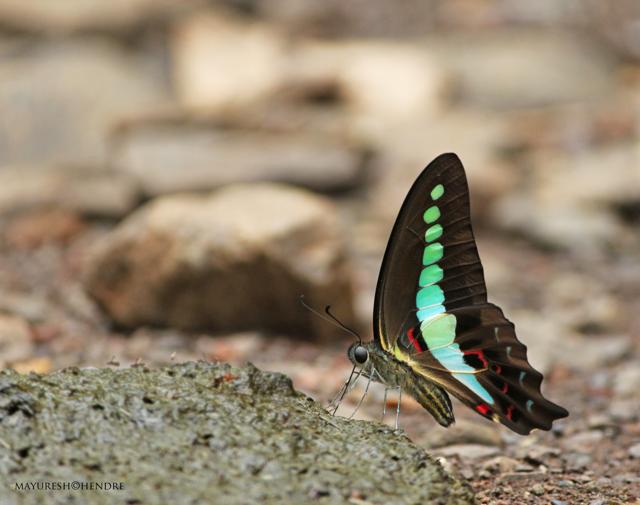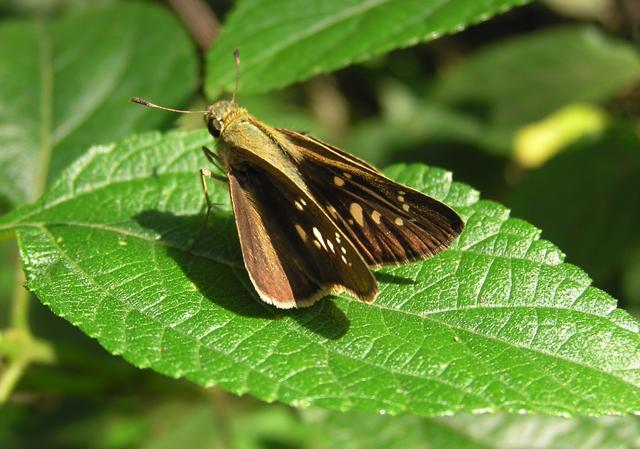Colour queens create a flutter in South Delhi
Out of 92 species of butterflies that can be spotted in Delhi, Painted Lady, Indian Fritillary, Indian Red Flash, Common Blue Bottle and Tawny Coaster are rare, said Prakash. The Painted lady is a large butterfly and its wing span is around 5cm to 9cm. The life span of a Painted Lady Butterfly is 2 to 4 weeks.
Monsoon is the best time for nature lovers as it breaks the debilitating heat spell and turns the ecosystem verdant once more. It is at this time of the year that you can spot butterflies of different species adding colours to the flora. At least six new species of butterfly have been recorded in the Capital in the past 10 years and most of them were found in forest areas of Southern Ridge like Asola-Bhatti Wildlife Sanctuary, Bhatti Mines, Sanjay Van, Aravalli Biodiversity Park, Okhla Bird Sanctuary and Lod hi Gardens.

According to the research by Dr Surya Prakash, a zoologist from Jawaharlal Nehru University (JNU), the six new butterfly species seen in Southern Ridge are: Common Baron (Euthalia aconthea), Conjoined Swift (Pelopidas conjuncta), Indian Tortoiseshell (Aglais kaschmirensis), The Red Pierrot (Talicada nyseus), Common Jay (Graphium doson) and Common Bluebottle (Graphium sarpedon). The last research carried out in 1986 by Larsen, a Danish entomologist, had not recorded these species.

Out of 92 species of butterflies that can be spotted in Delhi, Painted Lady, Indian Fritillary, Indian Red Flash, Common Blue Bottle and Tawny Coaster are rare, said Prakash. The Painted lady is a large butterfly and its wing span is around 5cm to 9cm. The life span of a Painted Lady Butterfly is 2 to 4 weeks.
Indian Fritillary has an orange body and distinctively marked orange wings with black spots. The female has black wing tips. Its body is 27mm to 38mm long. Another place where one can spot different kinds of butterflies is Asola Bhatti Wildlife Sanctuary. The sanctuary has a butterfly garden and a park is also being planned where native species of saplings will be planted to invite more butterflies.
“There are 91 species of butterfly recorded in our garden and on July 12 this year we spotted Common Mine, a rare species,” said Sohail Madan, centre manager CEC -BNHS Asola-Bhatti Wildlife Sanctuary. The Common Mine was spotted in Delhi after several years, he added.
There is also a butterfly conservatory at Ar a valli Biodiversity Park. Aisha Sultana, scientist at Aravalli Biodiversity Park, said more than 90 different kinds of butterflies can be spotted in the park’s conservatory .“Last year we spotted Euploea mulciber also known as Striped Blue Crow. To my knowledge it was spotted for the first time in past decade in the national capital,” she said. Striped Blue Crow is found in India and Southeast Asia and is dark brown in colour glossed with blue.
DWINDLING NUMBERS
Not all is well in Delhi’s butterfly kingdom, though. Research shows that the number of species have increased from 86 to 92 but some of the butterfly species, which were reported by entomologists in 1986, have lessened in numbers or disappeared. These are Black Rajah, Common Sailer, Giant Redeye, Indian Fritillary, Common Pierrot, Common Rose, Crimson Rose, Tawny Coster and the Indian Jezebel.
“Though 92 butterfly species can be seen in Delhi, warning bells are ringing as several species have been lost in the past decade due to poaching, habitat loss, replacement of native trees with other species and deforestation,” said Prakash The population of butterflies is also negatively affected by use of urea and pesticides. “Urea, pesticides and other chemicals used in garden and plants to kill pests do not differentiate between harmful pests and butterflies,” Prakash added.
Meanwhile, Madan said that the number of species spotted in Delhi might be increasing but this does not present the correct picture. “The reason that number of species is increasing is because increasing number of people are now actively researching on the subject,” he said. Also, he points out that the number of species might be on the rise but their overall count is actually decreasing.
Aisha Sultana said a new species can be added to the list if a plant that is brought from Himalyas or other regions had butterfly eggs on it. But this does not mean that the count too has increased.
“The problem with Delhi is that some work is being done to increase butterfly count but this is done in selected pockets like biodiversity parks and sanctuaries. Butterflies should not be limited to these areas. A suitable environment should be created so that butterflies are seen in parks and gardens too,” Sultana said. In the process of building flyovers and malls, several weeds that attracted butterflies have been uprooted, she added.

BUTTERFLY GARDENING
A major reason for the decrease in the number of butterflies is that the concept of ‘butterfly gardening’ is vanishing. Butterfly gardening is designed to create an environment that attracts butterflies. Since, butterflies feed on the nectar of flowers, the concept refers to growing those plants that attract them, depending on the location, time of year, and other factors.
Butterflies need specific plant species to grow and breed and most of these are wild varieties. These wild plants are often considered as weeds and hence they are eradicated from home and kitchen gardens, said Prakash.
Experts say people should help build a suitable environment for their sustainability. One should plants trees like Kari leaves, lemon tree, Kalanchoe as they invite butterflies and at the same time are useful to human beings. Also, one should not remove plants like Lantana or Milk Weed thinking it is useless, he added.
IMPORTANT FOR ECOLOGY
Butterflies play an important role in production of fruits as they are pollinators. A pollinator is an animal or insect that causes plants to make fruit or seeds. They do this by moving pollen from one part of the flower of a plant to another part. This pollen then fertilizes the plant. Only fertilized plants can make fruit and/or seeds, and without them, the plants cannot reproduce. They are second most important pollinators after honey bees. “This means that we human beings are dependent upon them for our survival,” Prakash said. Butterflies also play an important role in the food chain as many reptiles also feed upon them for their survival.
Stay updated with all top Cities including, Bengaluru, Delhi, Mumbai and more across India. Stay informed on the latest happenings in World News along with Delhi Election 2025 and Delhi Election Result 2025 Live, New Delhi Election Result Live, Kalkaji Election Result Live at Hindustan Times.
Stay updated with all top Cities including, Bengaluru, Delhi, Mumbai and more across India. Stay informed on the latest happenings in World News along with Delhi Election 2025 and Delhi Election Result 2025 Live, New Delhi Election Result Live, Kalkaji Election Result Live at Hindustan Times.





